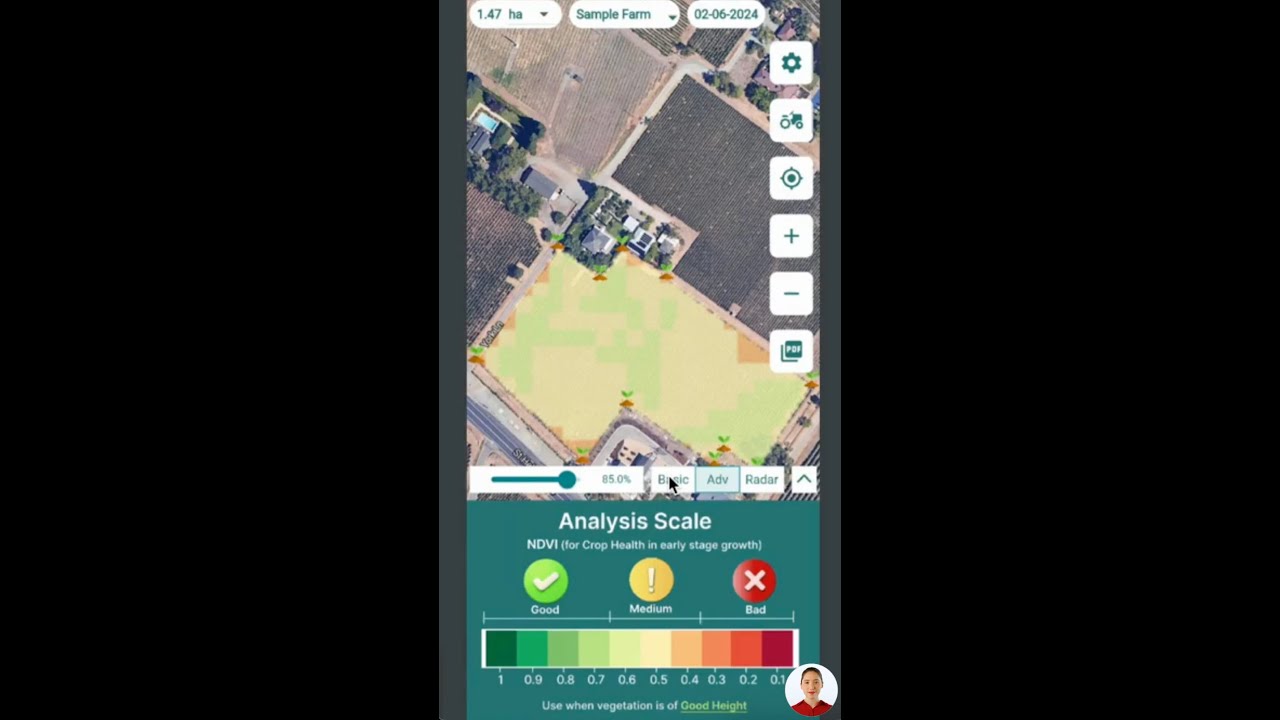Revolutionizing Canadian Wheat: How Genomic Selection is Boosting Disease Resistance and Yield in Prairie Varieties
“A $11.8 million investment over 5 years aims to revolutionize Canadian wheat breeding for disease resistance and yield.”

In the vast prairies of western Canada, a revolution is underway. We’re witnessing a transformative era in wheat breeding research, propelled by a substantial $11.8 million investment aimed at creating disease-resistant wheat varieties and high-yielding wheat cultivars. This five-year funding boost marks a significant leap forward in Canadian wheat development, promising to reshape the landscape of wheat farming across the nation.
At the heart of this initiative lies the commitment to improving wheat quality and sustainability through advanced genomic selection technology. We’re focusing on developing key wheat varieties that are not only resistant to common diseases but also adapted to diverse growing conditions. This groundbreaking research could revolutionize wheat production, benefiting farmers across the country and ensuring Canada’s position as a global leader in wheat cultivation.
The Power of Genomic Selection in Wheat Breeding
Genomic selection is a cutting-edge technology that’s transforming the way we approach wheat breeding. By leveraging the power of genetic information, we can now identify and select for desirable traits with unprecedented precision and efficiency. This technology allows us to:
- Accelerate the breeding process
- Develop varieties with multiple beneficial traits
- Enhance disease resistance and yield potential
- Improve adaptation to specific growing conditions
The application of genomic selection in wheat breeding programs is a game-changer. It enables us to stack multiple genes for enhanced pest resistance, improved end-use quality, and superior agronomic performance. This precision breeding approach is key to developing wheat varieties that can withstand the challenges of a changing climate while meeting the demands of both farmers and consumers.
Targeted Wheat Varieties: A Closer Look
Our research is focusing on four key wheat varieties, each with its own unique characteristics and potential for improvement:
- Canadian Western Red Spring (CWRS)
- Canada Northern Hard Red (CNHR)
- Canadian Western Amber Durum (CWAD)
- Canadian Prairie Spring Red (CPSR)
These varieties form the backbone of Canadian wheat production, and our goal is to enhance their resilience, productivity, and quality through targeted breeding efforts.
| Wheat Variety | Disease Resistance | Estimated Yield Increase (%) | Adaptability to Growing Conditions (1-5) | End-Use Quality Improvements |
|---|---|---|---|---|
| Canadian Western Red Spring | High (rusts, bunt, FHB) | 10-15% | 4 | Enhanced protein content, improved baking quality |
| Northern Hard Red | Medium-High (rusts, bunt) | 8-12% | 3 | Increased gluten strength, better milling properties |
| Western Amber Durum | High (FHB, rusts) | 12-18% | 5 | Improved semolina yield, enhanced pasta quality |
| Prairie Spring Red | Medium (bunt, FHB) | 7-10% | 4 | Better flour extraction, improved dough stability |
“Genomic selection technology targets 4 wheat types: Western Red Spring, Northern Hard Red, Western Amber Durum, and Prairie Spring Red.”
Enhancing Disease Resistance: A Priority in Wheat Breeding
One of the primary objectives of our wheat breeding research is to develop varieties with enhanced resistance to common diseases. We’re targeting some of the most devastating wheat diseases, including:
- Wheat rusts (leaf, stem, and stripe rust)
- Common bunt
- Fusarium Head Blight (FHB)
By incorporating multiple resistance genes through genomic selection, we aim to create wheat varieties that can withstand these diseases, reducing the need for fungicides and ensuring more stable yields for farmers.

Boosting Yields and Adaptation to Growing Conditions
In addition to disease resistance, our wheat breeding efforts are focused on developing high-yielding wheat cultivars that are well-adapted to the diverse growing conditions across western Canada. This involves:
- Selecting for traits that enhance drought tolerance
- Improving nutrient use efficiency
- Developing varieties with better heat and cold tolerance
- Enhancing overall plant vigor and resilience
By combining these traits with improved disease resistance, we’re creating wheat varieties that can thrive in a range of environments, ensuring more consistent yields for farmers across the prairies.
The Role of Technology in Modern Wheat Breeding
The success of our wheat breeding program hinges on the integration of cutting-edge technologies. While our focus is on genomic selection, it’s worth noting that other technological advancements are also playing a crucial role in modernizing wheat breeding and farming practices.
For instance, satellite-based crop monitoring systems, like those offered by Farmonaut, are revolutionizing the way farmers manage their wheat crops. These systems provide real-time insights into crop health, helping farmers make informed decisions about irrigation, fertilization, and pest management.
Additionally, AI-driven advisory systems are becoming increasingly important in optimizing wheat production. These systems analyze data from various sources, including satellite imagery and weather forecasts, to provide personalized recommendations for crop management.
The Impact on Canadian Wheat Farmers
The $11.8 million investment in wheat breeding research is set to have a profound impact on Canadian wheat farmers. We anticipate several key benefits:
- Increased yields and more stable production
- Reduced reliance on pesticides due to improved disease resistance
- Better adaptation to local growing conditions
- Improved end-use quality, potentially opening up new market opportunities
- Enhanced sustainability of wheat farming practices
These advancements will help ensure that Canadian wheat remains competitive in the global market while supporting the long-term viability of wheat farming in western Canada.
The Future of Wheat Breeding: Challenges and Opportunities
As we look to the future of wheat breeding, we see both challenges and opportunities on the horizon. Some key areas of focus include:
- Adapting to climate change and increasing weather variability
- Addressing emerging pest and disease threats
- Meeting changing consumer demands for wheat quality and nutrition
- Integrating new technologies to further accelerate breeding progress
Our ongoing research and investment in genomic selection and other advanced breeding technologies will be crucial in addressing these challenges and seizing new opportunities in wheat development.
Embracing Technology for Sustainable Wheat Farming
While our focus is on breeding improved wheat varieties, it’s important to recognize the role that other technologies play in supporting sustainable wheat farming. Farmers today have access to a range of tools and platforms that can enhance their decision-making and improve crop management.
For example, mobile applications like those offered by Farmonaut provide farmers with easy access to satellite-based crop monitoring data, weather forecasts, and personalized recommendations. These tools can help farmers optimize their resource use and improve overall farm productivity.
Conclusion: A Bright Future for Canadian Wheat
The $11.8 million investment in wheat breeding research marks a significant milestone in the evolution of Canadian wheat production. By harnessing the power of genomic selection and other advanced technologies, we’re paving the way for a new generation of wheat varieties that are more resilient, productive, and sustainable.
As we continue to push the boundaries of wheat breeding, we’re not just improving crops – we’re securing the future of Canadian agriculture. The advances made through this research will ripple through the entire wheat value chain, from farmers to processors to consumers, reinforcing Canada’s position as a global leader in wheat production.
The future of Canadian wheat is bright, and we’re excited to be at the forefront of this revolution in wheat breeding and agricultural technology.
FAQ Section
Q: What is genomic selection in wheat breeding?
A: Genomic selection is an advanced breeding technique that uses genetic markers to predict the performance of potential wheat varieties. It allows breeders to select for desirable traits more quickly and accurately than traditional breeding methods.
Q: How will the new wheat varieties benefit farmers?
A: The new varieties will offer improved disease resistance, higher yields, and better adaptation to local growing conditions. This can lead to more stable production, reduced pesticide use, and potentially higher profits for farmers.
Q: When will these new wheat varieties be available to farmers?
A: The development of new wheat varieties typically takes several years. However, with the accelerated breeding process enabled by genomic selection, we anticipate that some improved varieties could be available to farmers within the next 5-7 years.
Q: How does this research contribute to sustainable agriculture?
A: By developing wheat varieties with improved disease resistance and adaptation to local conditions, we can reduce the need for pesticides and help farmers use resources more efficiently. This contributes to more sustainable farming practices.
Q: Will these new wheat varieties be genetically modified (GM)?
A: No, the varieties developed through this research program will not be genetically modified. Genomic selection is a breeding technique that uses natural genetic variation within wheat to develop improved varieties.
Leveraging Technology for Farm Management
While our focus has been on the advancements in wheat breeding, it’s worth noting that modern farmers have access to a range of technological tools to support their operations. One such tool is the Farmonaut platform, which offers satellite-based farm management solutions.
For those interested in exploring how satellite technology can enhance farm management, Farmonaut provides a comprehensive suite of tools. Their platform includes features such as crop health monitoring, AI-based advisory systems, and resource management tools.
Developers and agribusinesses looking to integrate satellite and weather data into their own systems can explore Farmonaut’s API offerings:
Additionally, for those interested in promoting sustainable farming practices and earning income, Farmonaut offers an affiliate program:
Earn With Farmonaut: Affiliate Program
Earn 20% recurring commission with Farmonaut’s affiliate program by sharing your promo code and helping farmers save 10%. Onboard 10 Elite farmers monthly to earn a minimum of $148,000 annually—start now and grow your income!
Farmonaut Subscriptions
As we continue to advance in wheat breeding and agricultural technology, the future of Canadian wheat farming looks brighter than ever. By combining cutting-edge research with practical, technology-driven solutions, we’re not just improving crops – we’re revolutionizing the entire wheat production ecosystem.




















